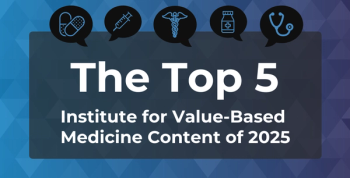
PACE Program Expansion Requires For-Profit Investment, Reduced Regulatory Burden, and Greater Patient Eligibility
Given the track record of good outcomes and savings, policy leaders must do more to promote growth of for-profit PACE programs, the author asserts.
Regaining the federal budget’s fiscal sustainability requires fundamental reforms, especially to health care programs that are driving the projected budget deficits. Unfortunately, structural entitlement reforms are politically infeasible. It is essential, consequently, for policymakers to continually scrub the budget for potential efficiency gains. Toward that goal, promoting policies that support the expansion of the PACE (
PACE, officially established in 1997, is widely regarded as a success. It delivers a nursing home level of care to lower-income older adults who are frail, chronically ill, and have potentially significant functional and cognitive impairments but who can still live in their own homes. The services
By keeping patients at home and in their communities, the program helps many seniors remain in their preferred living setting. By avoiding unnecessary and more expensive institutional settings such as nursing home care, PACE also saves the federal and state governments a significant amount of money. Based on the
The potential savings are even greater. The program could generate an additional $3.9 billion in savings if it reached the
PACE’s benefits go beyond budgetary savings. Patients participating in the program also experience better health outcomes. According to a
The program has captured the attention of current CMS Administrator Mehmet Oz, MD. Oz has singled out PACE on visits to a program site in San Francisco, California, which took place soon after his appointment, and more recently during a July visit to AtlantiCare in New Jersey. He noted that a Federally Qualified Health Center in Atlantic City
Given these potential benefits, having the resources to expand the PACE program is essential. Starting a new center typically is costly, between $5 and $10 million, which creates a significant obstacle to expanding the program. A 2015 regulatory change that allows for-profit groups to run PACE programs helps overcome this obstacle because these organizations have greater access to the needed capital while providing the same high quality of care. As a result, the for-profit PACE providers have been driving the program’s recent growth and reaching a wider population.
For instance, a March 2025 evaluation of PACE by
In 2025, authors writing in
And this is where policy reforms come into play. To expand the benefits of the PACE program to a wider population, policymakers should support the ability of for-profit providers to participate in the PACE program, streamline the regulatory burden for starting and operating a PACE program, and expand the eligibility to incorporate a larger share of the high-need, high-cost patients that may currently have difficulties qualifying.
The PACE program has shown great potential providing enrollees with better care while saving money. For this reason, continued growth of for-profit PACE providers is essential. Fostering this growth requires a regulatory environment that enables both not-for-profit and for-profit organizations to expand the reach of this successful program.
Author Information
Wayne Winegarden, PhD, is a senior fellow in Business and Economics and director of the Center for Medical Economics and Innovation at the Pacific Research Institute.
References
- PACE services. National PACE Association. Accessed August 18, 2025.
https://www.npaonline.org/pace-services - Winegarden W. The PACE managed care program:Its purpose, benefits, and potential for growth. Pacific Research Institute. July 2025. Accessed August 18, 2025.
https://medecon.org/wp-content/uploads/2025/07/CMEI_PACE_analysis_Final.pdf - Nevarez E. New expansions of PACE aim to transform elderly care with integrated healthcare services. Chartis. May 24, 2024. Accessed August 19, 2025.
https://www.chartis.com/insights/new-expansions-pace-aim-transform-elderly-care-integrated-healthcare-services - Segelman M, Szydlowski J, Kinosian B, et al. Hospitalizations in the Program of All-Inclusive Care for the Elderly. J Am Geriatr Soc. 2014;62(2):320-324.
doi:10.1111/jgs.12637 - Klein HE. AI is not going to replace doctors, it’s going to empower them: Dr Mehmet Oz. AJMC. July 25, 2025. Accessed August 19, 2025.
https://www.ajmc.com/view/ai-is-not-going-to-replace-doctors-it-s-going-to-empower-them-dr-mehmet-oz
Newsletter
Stay ahead of policy, cost, and value—subscribe to AJMC for expert insights at the intersection of clinical care and health economics.







































